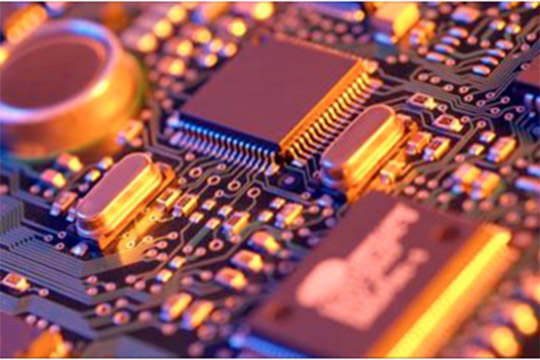TECHNOLOGY FOCUS
In any system, the power amplifier (PA) is a critical component. It is typically the most costly single item and consumes most of the supply power. Knowledge of the possibilities for trading power per unit cost with efficiency and linearity often forms the basis for the entire system architecture design.
The increasing use of linearisation techniques, and especially the emergence of high speed digital processing as an enabling technology to implement predistortion on the PA input signal, represent an important paradigm shift in PA design.
The PA component can now be designed with more emphasis on efficiency, without the traditional constraints of meeting stringent linearity specs simultaneously. Maximising the utility of a lineariser in order to obtain optimum efficiency has thus become a new subject area in modern RF PA design.


COURSE CONTENT
This is a newly revised and updated 5-day RF PA design course, dealing with the theory and design of RF power amplifiers for wireless, satcom, and microwave applications.
The course features in-depth treatment of PA design, PA modes, envelope power management, and non-linear effects.
Benefits of this course is that it enhance your understanding of:
- Power amplifier basic concepts, classes of operation, stability, linearity, bias technique
- Impedance matching techniques based on lumped elements and transmission lines
- High-efficiency techniques including well-know Classes F and E and newly developed classes, Efficiency Enhancement Techniques
- Power Amplifier Non-Linearities and Signal Environments
- PA Architecture
WHO SHOULD ATTEND
This course presents an overview, fundamentals, theory, practical and advanced power amplifier design which will be of interest to:
- engineers and technical staff
- managers and business development personnel
who plan to pursue this technology, or compete with it.

Day 1
Power Amplifier Basics and Signal Environments
Linear amplifier modes are described with quantitative analysis of power, efficiency and linearity tradeoffs in uncompensated form leading into a discussion of the device technologies currently available for PA design, including LDMOS, GaAs MESFET and HBT, SiC and GaN. Differences between bipolar and FET devices, and the effects of different kinds of parasitic effects will be discussed using circuit analysis and CAD models. Possibilities for tailoring the characteristics of devices for optimum efficiency and linearity will be presented. Particular emphasis is given to correct fundamental and harmonic matching. The impact of non-ideal harmonic terminations in practical Class AB designs will be analysed quantitatively. Various modulation systems (QPSK, EDGE, CDMA, OFDM) will be reviewed from the viewpoint of PA requirements.
- Introduction
- Classical PA Modes, Class A, Class AB, Class B, Class C
- PA Device Technology
- Optimum Device Characteristics for Class AB Operation
- Modulation Systems in Wireless Communications QPSK, GSM, EDGE, OFDM
- Effect of Signal Environment on RFPA Design
Day 2
Class AB PA Design
We will focus on practical issues in the design and manufacture of PAs for RF and MW Systems. Several design examples will be demonstrated, including a GaAs MESFET, a GaAs HBT, and a high power LDMOS device.
- Class AB circuits
- Harmonic Terminations
- CAD Design Examples
Day 3
Power Amplifier Non-Linearity and Signal Environments
We will focus on the non-linear properties of RF PAs, their source, manifestation, and methods for their characterization and modeling. A topical issue of great impact in modern linearised multi-carrier PA (MCPA) applications is memory effects.This subject will be illustrated with device measurements, and physical causes and remedies will be discussed.
There will be a full treatment of bias network design.The process of converting a measured PA gain compression and AM-PM characteristic into spectral and EVM distortion, and the issues involved, will be discussed using several different modulation environments, including GSM-EDGE and WCDMA.
- Non-Linear PA Characteristics, Gain Compression, AM-PM
- Physical Origins of AM-PM, Analysis
- Peak to Average Power Ratio Issues in Modern Signal Environments
- Spectral Regrowth and EVM
- Power Series, Volterra Series. Model Fitting using Measured Data
- Envelope Simulation using EDGE, OFDM signals
- Memory Effects, Definition, Dynamic Gain/Phase Measurements, Causes and Remedies
- Bias Network Design and Stability
Day 4
Efficiency Enhancement Techniques
We will focus on the key issue of power back-off (PBO) efficiency, and LINC (linear amplification using non-linear components). Envelope management methods and tracking techniques in PA design will be presented. These include classical techniques such as the Chireix out-phasing method, the Khan and the Polar Loop envelope reconstruction approaches and the Doherty PA. Other less well-known techniques will be discussed, with emphasis on the broader band requirements, which future WiMax systems will require. Ultra high efficiency amplifier modes, Classes C, D, E, and F will be analyzed as possible candidates for LINC implementation and as stand-alone possibilities in systems using digital pre-distortion or feed forward linearization. Finally, PA architecture, including multistage effects, power combining techniques, and load pull design will be discussed. Step-by-step examples of two MMIC PA designs, one with modest, and a further example with wideband operation will be given - this will include technology evaluation to packaging considerations.
- Power Combining Techniques
- Balanced and Push-Pull Operation
- Load-Pull Techniques
- Microwave PA Design - including step-by-step MMIC PA design examples
Day 5
An introduction to mm-wave components and applications
mm-wave circuits are becoming more commonplace as semiconductor technologies mature which provide performance up to 100 GHz and beyond. This Session will offer an introduction to the technologies and components operating at mm-wave and some of the key applications. Amplifier design at mm-wave will be discussed with a design example. Differences in the approach of amplifier design at mm-wave compared to lower frequency will be highlighted. In addition, an introduction will be given for other common component types at mm-wave: mixers, multipliers, oscillators and mixed (analogue/digital) signal techniques. Packaging, interconnection and combining will also be considered. Finally, the emerging field of sub-mm-wave (Terahertz) components will be introduced.
- Applications in mm-wave
- mm-wave technologies
- Amplifiers - including a design example
- Common mm-wave components
- Packaging at mm-wave
- Terahertz
Said about the course from previous participants:
"Very practical view of subjects, gives good input for technicians."
"A good trade-off between theory and practice, good basis for new designs."
"Concentration on insight, fundamentals, rules of thumb, practical attitude."
"Topics presented in a logical order. Dr Cripps brought out valuable personal observations upon several topics."
"Lecture material and notes backed up with appropriate and relevant demonstrations. Broad spectrum of information presented."
"Good overview about state-of-the-art techniques. Good input for my work."
"Good curriculum, nice sense of humor of the Professor."
Dr Cripps has written a book, that he would like to recommend, however, the book is not compulsory for the course.
Title: RF Power Amplifiers for Wireless Communications, Second Edition, 2006 ISBN 978-1-59693-018-6.
Dr Cripps has also written "Advanced Techniques in RF Power Amplifier Design", 2002. ISBN 978-1-58053-282-2.
Students may order the books over the Artech House website, http://www.artechhouse.com and receive a 15% discount by entering the promotion code "CEI" in the online order form.

